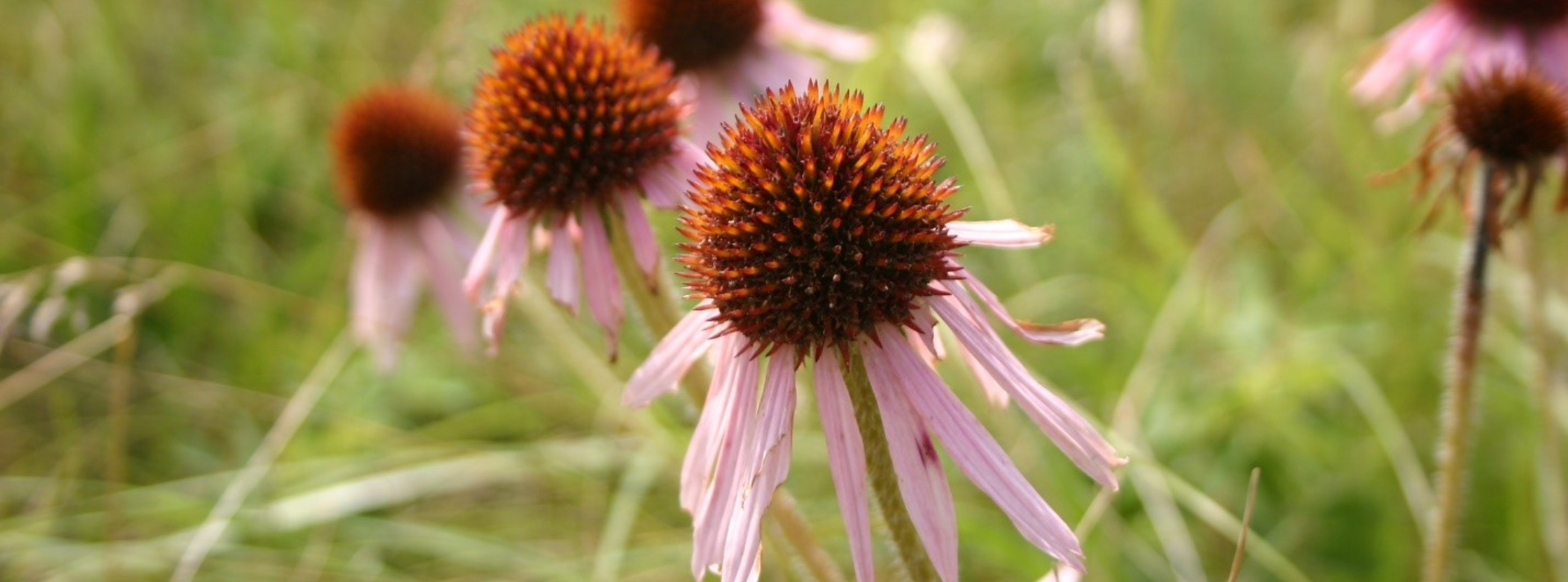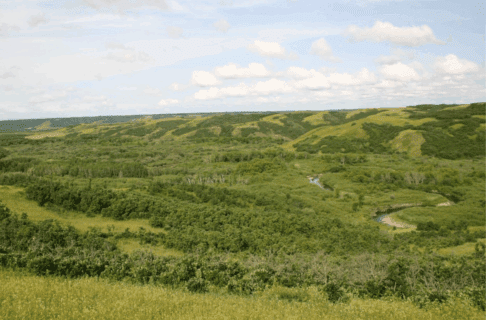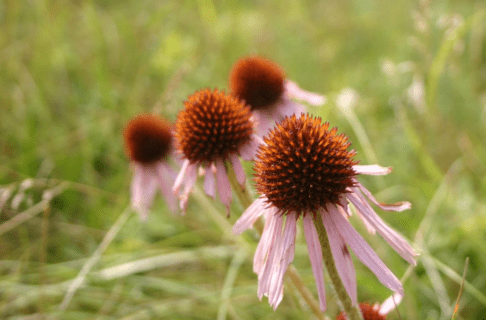Posted on: Wednesday September 25, 2024
Manitoba’s native prairies are endangered because most of them have been cultivated for annual crop production. As a result, some of the rarest species of plants in the province are found in the prairies. The Manitoba Museum helps to document where the rarest plants grow by conducting careful surveys of the prairies that remain. Some of the rare plants are tiny and can only be seen by pawing through the thick grasses. This summer, I was able to visit two areas in the southwest to examine the native vegetation there: Sioux Valley Dakota Nation and the Nature Conservancy of Manitoba’s Jackson Pipestone Prairie and Wetlands.
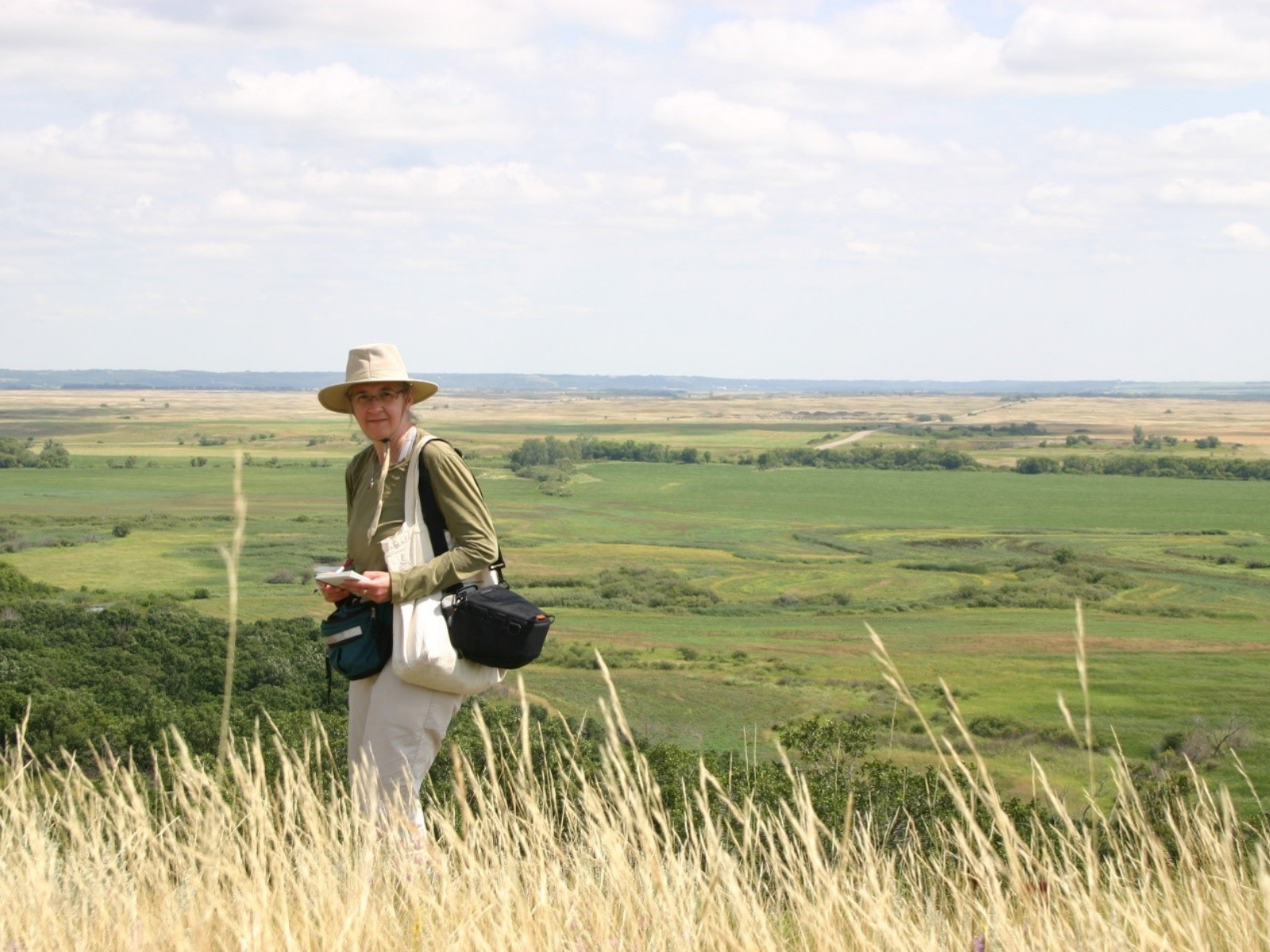
Fig. 1. Dr. Robson conducted surveys along the Assiniboine River Valley at Sioux Valley Dakota Nation.
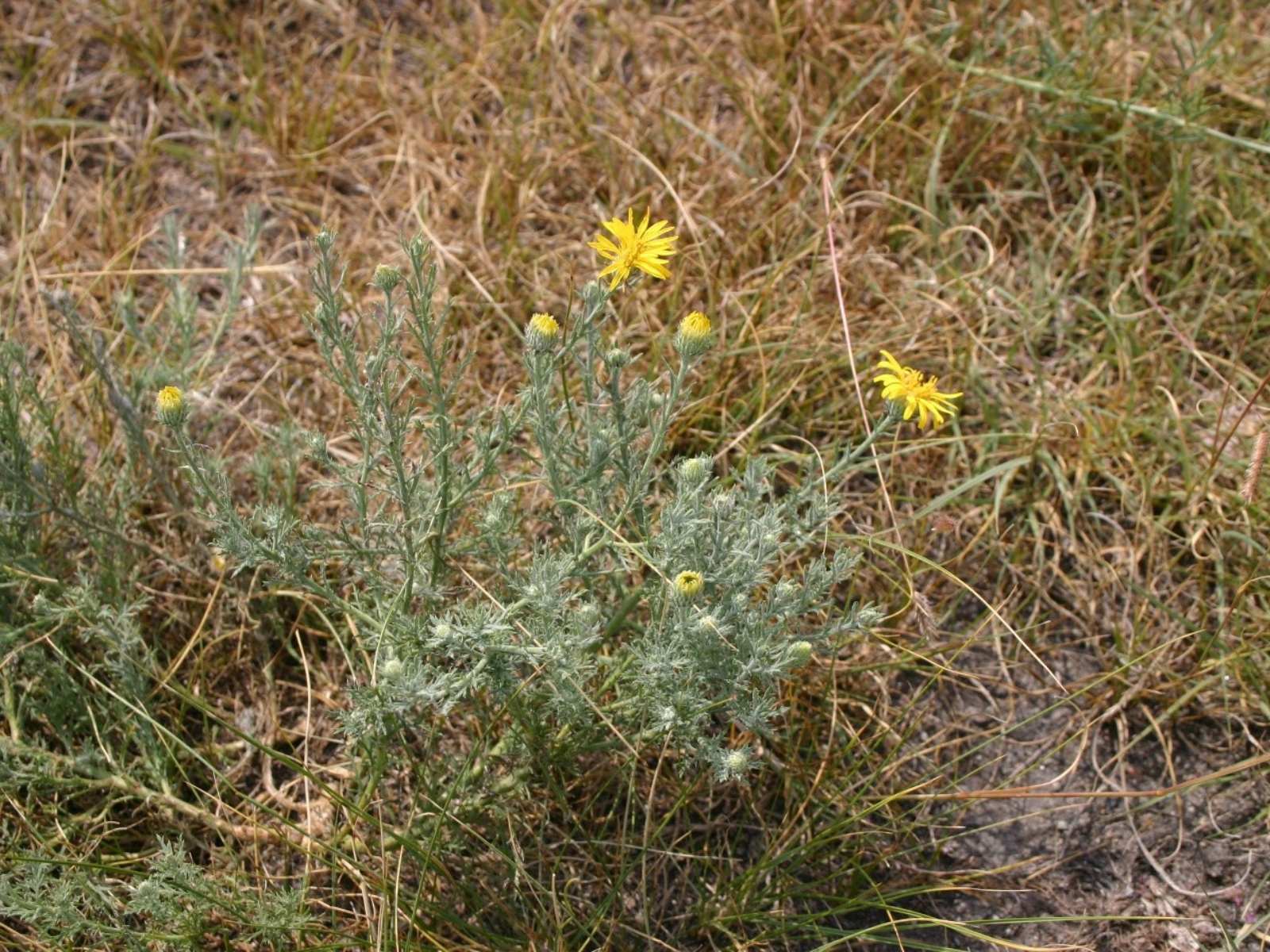
Fig. 2. The rare Lacy Tansy-aster (Xanthisma spinulosa) has distinctive grey-green foliage with tiny spines on the leaf edges.
At Sioux Valley, I was able to tour several areas with intact prairie and wetlands with Kevin Tacan and Jennifer McIvor. During the field work, we found several rare plant “hotspots”, that contained multiple species of provincially rare plants. In total, 25 rare plant species were encountered, with one hotspot containing a whopping 12 species within a very small area. Although the plant species encountered are rare in Manitoba, they are more common in Saskatchewan and Alberta, and none of them were legally protected.
The Jackson Pipestone site is a new Nature Conservancy of Canada (NCC) preserve with both intact prairie and wetlands. Although the site was purchased to help protect the rare birds that nest there, including the Burrowing Owl, I discovered several rare plants growing on the prairie as well.
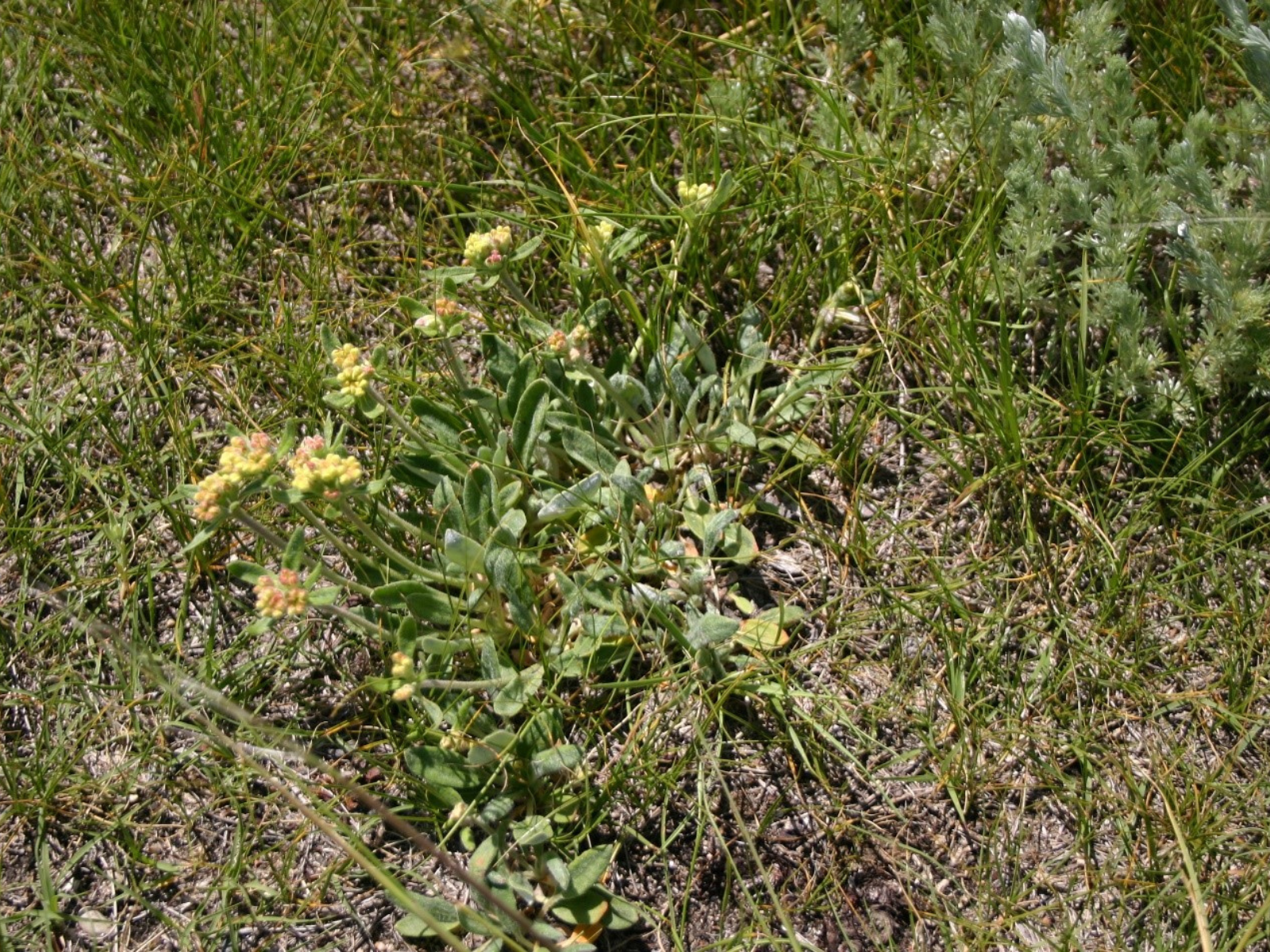
Fig. 3. One of the rare plants found this year was Yellow Buckwheat (Eriogonum flavum) a species that grows on dry, upper valley slopes.
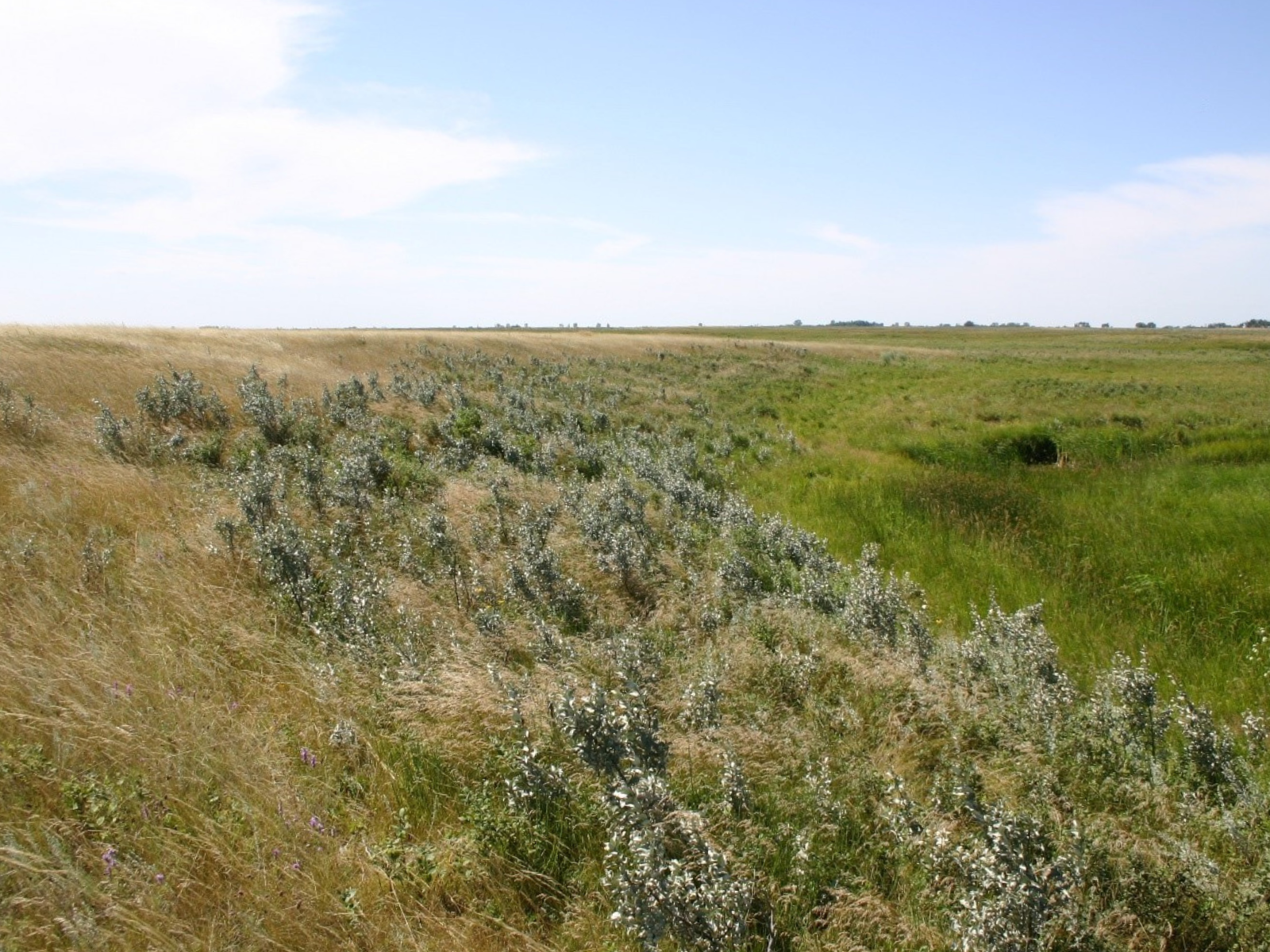
Fig. 4. Grassy bank and creek vegetation at the Jackson Pipestone Prairie and Wetlands preserve.
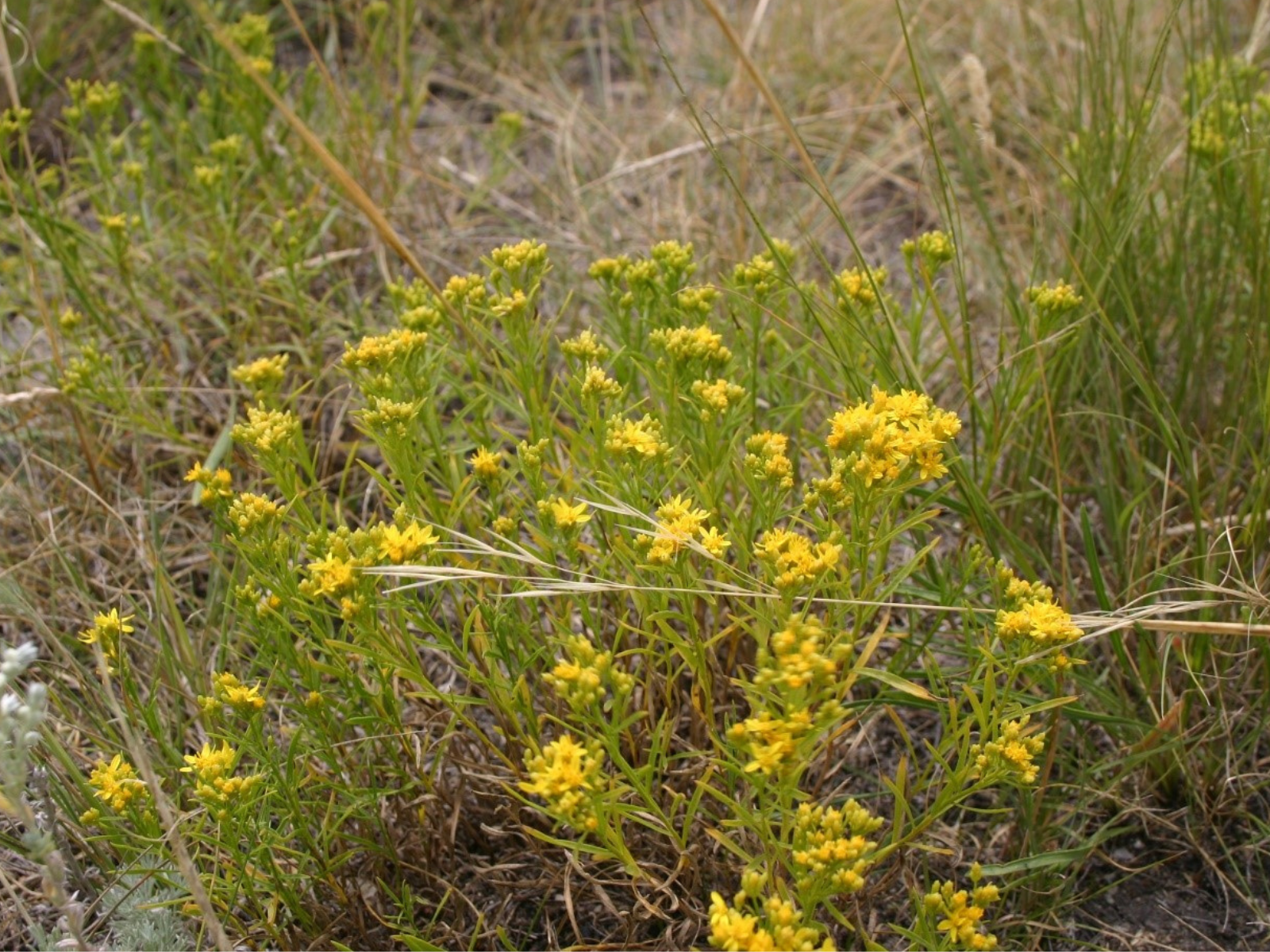
The upper banks of the creek that runs through the site contained several of the same rare plants located at Sioux Valley, including Yellow Buckwheat and Broom Snakeweed (Gutierrezia sarothrae). However, there were also two unique plants that were found at the preserve: Rocky Mountain Beeplant (Cleome serrulata) and Whorled Milkwort (Polygala verticillata). Both of these species are a bit unusual as they are among the few native annual plant species in the province. It is believed that rare annuals on the prairies were adapted to the disturbances created by wildfires, or the grazing and wallowing activities of Bison and other large herbivores.
Rocky Mountain Beeplant has beautiful spikes of pink flowers that are attractive to a wide variety of pollinators. It is quite a tall plant (hip level), and therefore, not easy to miss. In contrast, I almost missed seeing the nationally rare Whorled Milkwort due to its small stature. It is a short plant, about 10 cm tall, that was completely covered up by the tall grasses at the site. I discovered it only because I got down on my knees to search for some rare plants that form mats on the ground. Whorled Milkwort has tiny spikes of whitish-pink flowers, and narrow leaves arranged in whorls of four. It is a close relative of the more common perennial plant, Seneca Snakeroot (Polygala senega).
Fig. 5. Broom Snakeweed (Gutierrezia sarothrae) was found at both prairie sites visited in 2024.
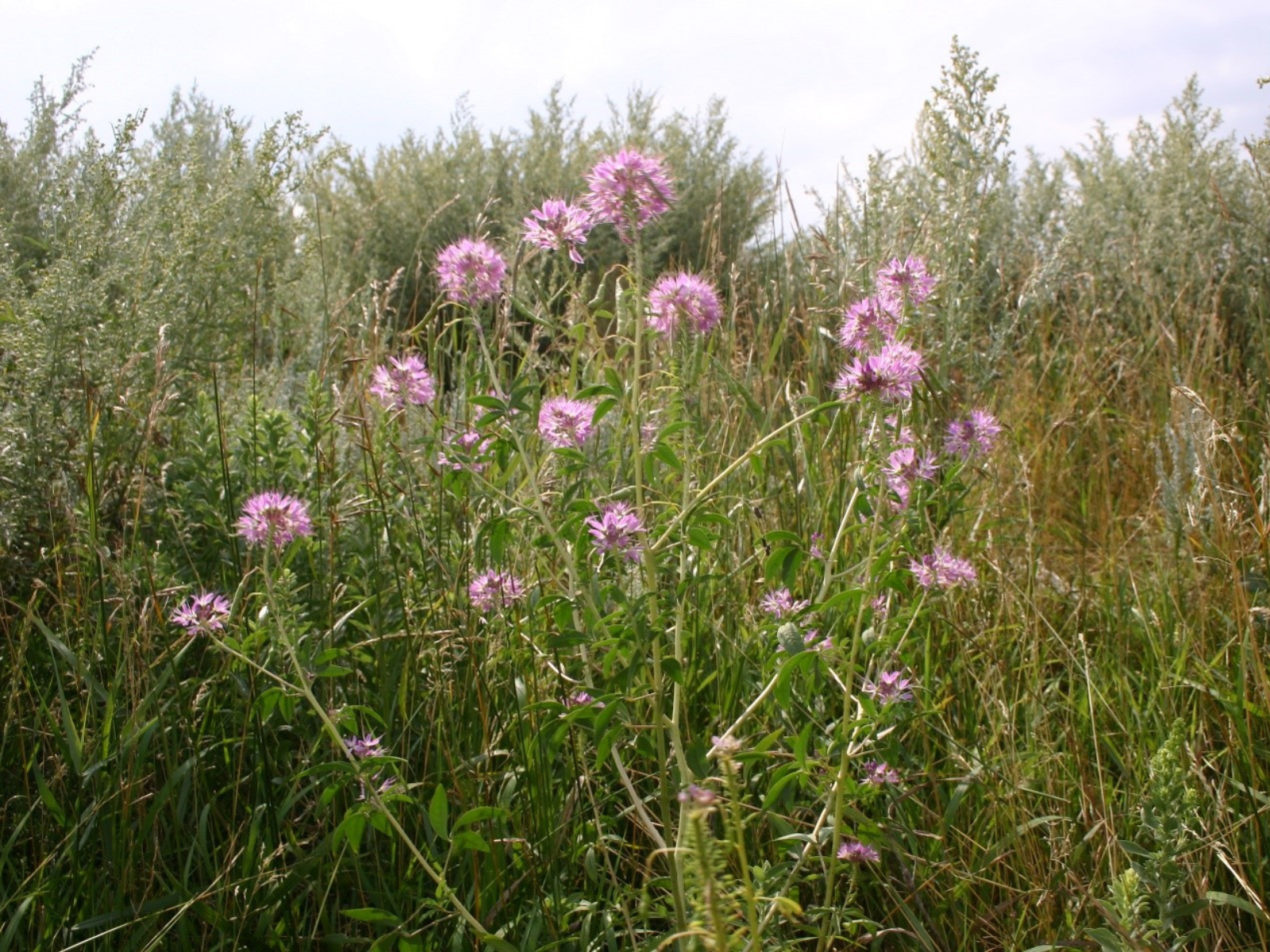
Fig. 6. A small population of the rare Rocky Mountain Beeplant (Cleome serrulata) was found at the Jackson Pipestone Prairie and Wetlands.
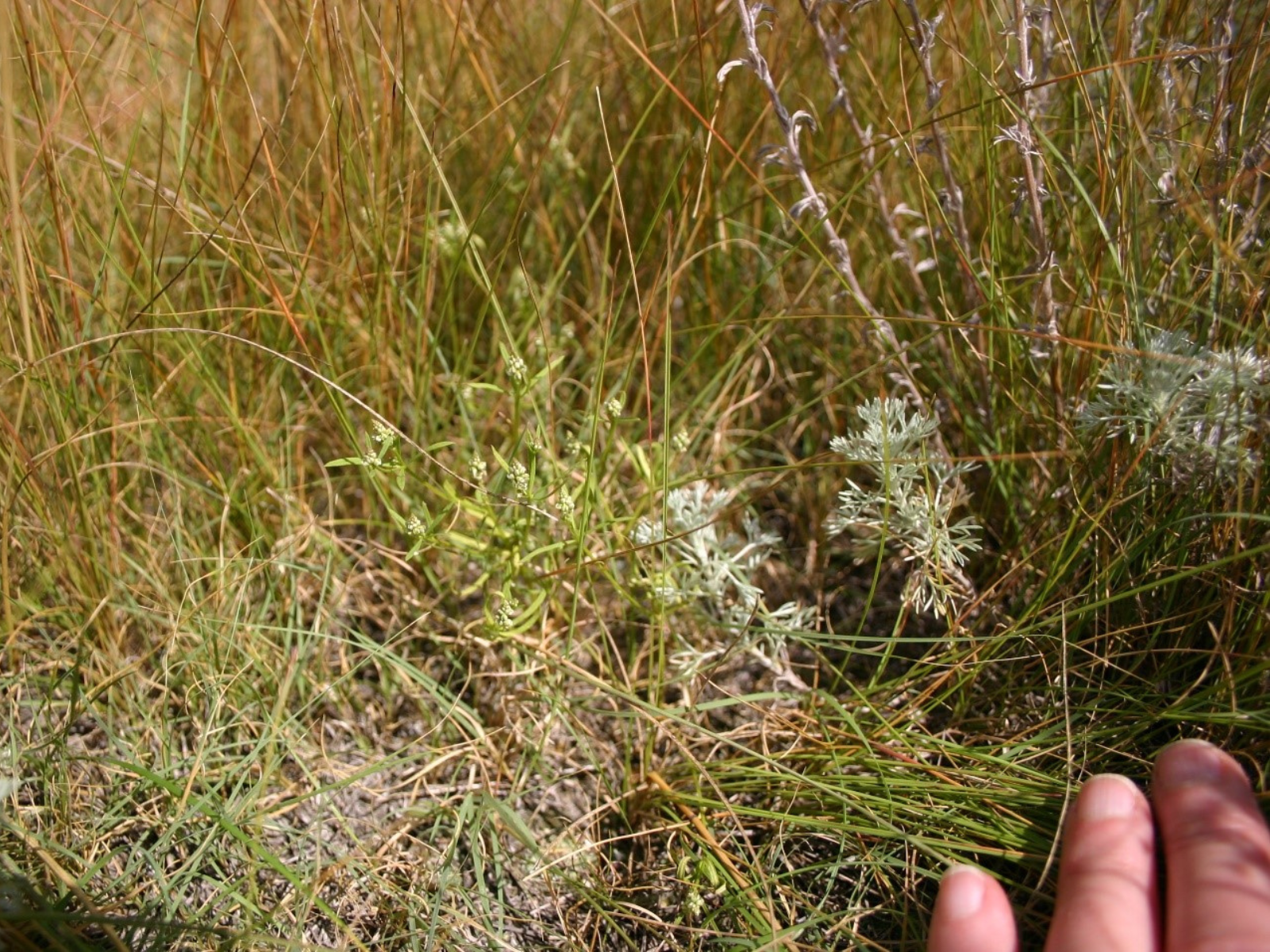
Fig. 7. The nationally rare Whorled Milkwort (Polygala verticillata) is hard to find amongst the dense prairie grasses, due to its small size.
One of the goals of my research this summer was to provide the landowners at both of these sites with a better understanding of the plant diversity that is present, to aid in species conservation. It’s hard to protect species when you don’t even know they are there!




